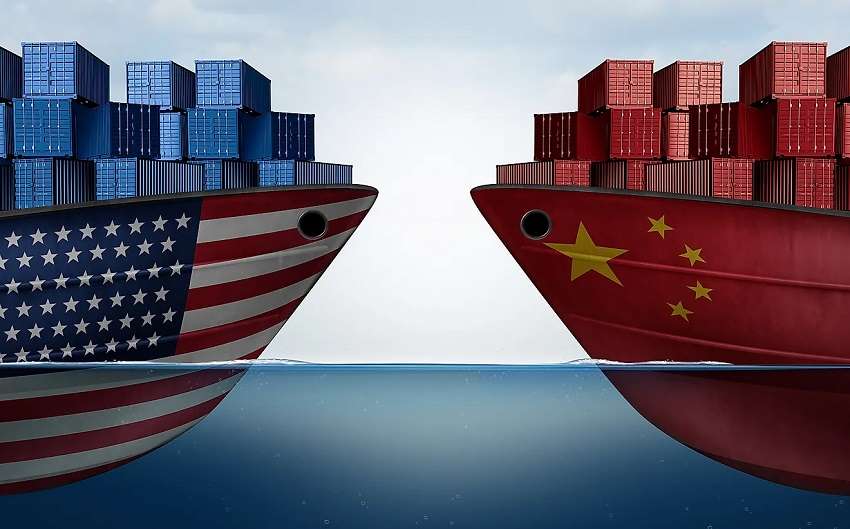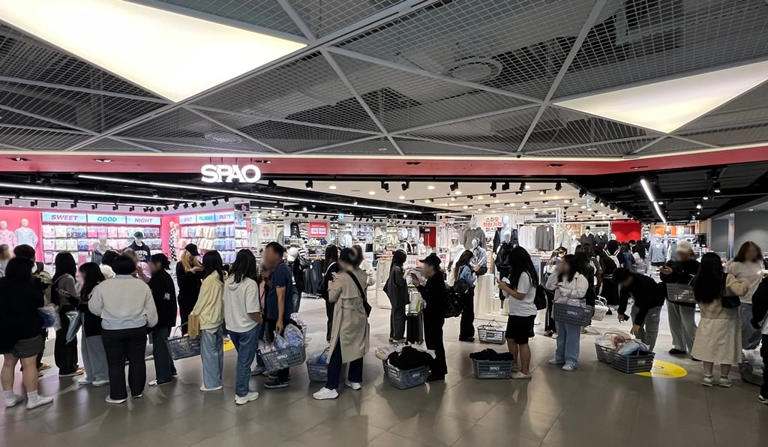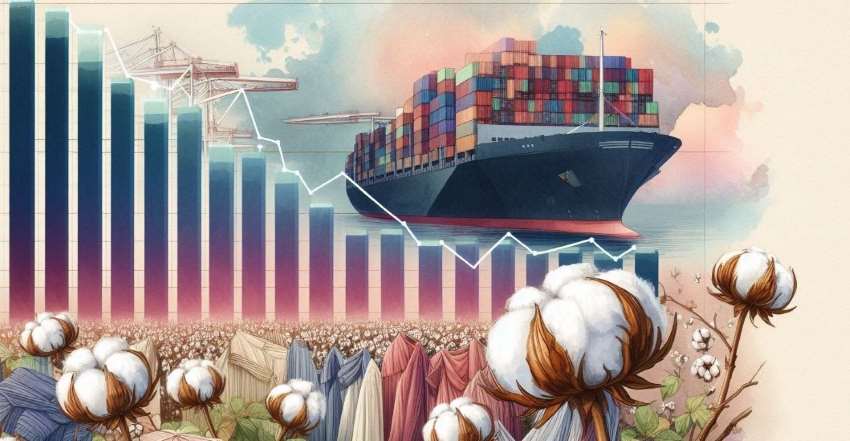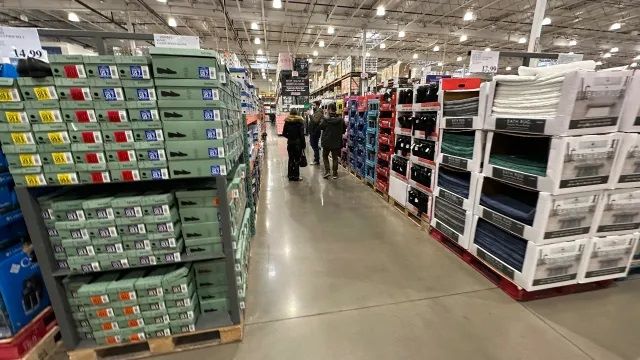FW
The wool industry, British Wool and the Campaign for Wool is planning a magnificent trade event for the South soon. For wool carpet manufacturers, the Wool Floor Show London, will provide a Spring event in March in the region, where much of the product is sold in the country. Some of the best carpet companies will come together to support the many new dynamic promotions, which are pushing the wool industry forward. The event itself, is a key part of the Campaign for Wool and British Wool Marketing Board’s promotional activity.
WoolRetailer.com, a new website for independent wool retailers, will be launched live at the show. This is also a promotional vehicle for wool carpets that has already received the backing and support of many key manufacturers and buying groups. The website includes a wool educational standard that is planned to give retailers and sales personnel ‘Wool Specialist’ status and also provide them with access to materials and promotional packages to support their business. Registration with the website will benefit retailers, as it offers both retailer and consumer appeal. Getting a quality wool retailer in the locality of the consumers is the aim and also that wool retailers can gain more knowledge, status and access tools to help them be better informed to sell wool carpets.
Campaign for Wool’s Wool Carpet Awards is the highlight of the event, which will celebrate wool’s performance, quality and style. The event will take place at the Chelsea Football Club Stadium.
Bridgette Kelly of the Campaign for Wool believes that the Wool Floor Show London is going to be the most impressive and stylish statement for wool flooring.
Myanmar’s small and medium-sized businesses want to work more closely with US companies. However, a number of important changes have to be made. Until 2003, more than 50 percent of Myanmar’s garment exports were shipped to the US. This was when trade sanctions crippled the industry, forcing many factories to close. The, the US government eased sanctions since 2012 prompting US companies such as Ball Corp, Coca-Cola and clothing retailer Gap, to reach out to local SMEs again.
U Than Htaik Lwin, Director of manufacturer Proven Group, during a US-ASEAN Business Council seminar in Yangon, said that SMEs in Myanmar could develop faster with help from the US. However, he also added that they need an open market and they would like to export to the US, but would first have to improve many things, such as access to funding and technology.
U Sai Maung from RWT Garment said that companies in the garment sector in particular wish to improve relations with the US. They had good relations before sanctions were imposed and if more US companies could engage with their garment sector, it would help with job creation, Maung added. However, at present, many struggle to find opportunities to work with US businesses and that US companies are unwilling to do business in Myanmar due to an underdeveloped supply chain, he stated. The costs in Myanmar are high and they don’t have factories to manufacture raw materials such as cotton, mentioned Maung.
According to Maung, the US sanctions has extended beyond US companies and another challenge was to understand what these US companies wanted. Businesspeople looking to export to the US would find it difficult at first, until they learn how to produce products to an international standard, he said.
H&M has a commitment to circular innovation within fashion and textiles. As one of the world’s largest fashion retailers, H&M has the potential to fundamentally shift the extent to which the clothing sector restores and regenerates fabrics and fibers for productive use — as it is working to develop a circular resource model for textiles.
The company is identifying opportunities to create value through circular practices and develop and implement targeted programs across its activities. Both the paper and textile industries are fiber-based. But the paper industry has already come a long way in terms of recycling. So a substantial opportunity exists for the clothing industry to emulate this success and to take it much further with regards to keeping high quality biological and technical based fibers in circulation.
H&M is committed to taking a leading role in these regenerative practices. It will work at applying circular economy thinking to all aspects of its operations and physical infrastructure, including its store footprint. Swedish retailer H&M operates clothing stores in 53 markets worldwide. Like many other European retailers, H&M is seeking to diversify from the crisis-hit euro zone. It has opened a store in New Delhi and a second one will follow soon.
https://www.hm.com/in/
A revolutionary colour solution for sewn products, CoatsMatch is being launched by Coats Group plc, the world’s leading industrial thread and consumer textile crafts business. It reduces lead times and the high costs associated with the colour design and approval processes and is targeted at the colour supply chain. The award winning thread sampling service Coats Colour Express’s success is what CoatsMatch is built upon. CoatsMatch has a portable and user-friendly colour-reading device like Coats Colour Express. Besides, CoatsMatch connects via Bluetooth to two mobile Apps—Coats Colour Select and Coats Colour Compare.
Coats Group plc CEO, Industrial, Rajiv Sharma said that CoatsMatch is another clear example of Coats using its global expertise to deliver customer-led innovation. Each a substantial amount of money is wasted through inefficiencies in the colour supply chain within the sewn products industry, he stated adding, that CoatsMatch helps reduce downtime and waste, resulting in lower costs for customers.
The colour is instantly loaded onto the Coats Colour Select App, once it has been captured. With its comprehensive set of more than 7,500 colour standards or a customer’s own colour library, this digital representation of the colour can then be accurately compared to the Coats Colour Atlas. Then, within seconds, the selected colour reference can also be transferred to other users along the supply chain, which in turns saves a substantial time and increases accuracy. Besides, a colour can be captured and referenced in the Coats Colour Compare App.
Colour supply chain stakeholders can share the measured colour standards, set tolerances within which a colour is acceptable, and compare physical fabric with their chosen colour for accuracy through the App.
Mexico-based Global Denim’s collection for Spring/Summer ’17 focuses on ‘weight’. Stretch and rigid is no longer a ‘valid conversation’ in the world of denim believes the Mexican mill, as both have become a norm in women’s and men’s market. Global Denim is dividing its collection into fabric under 10 oz. and fabric 10 oz. or more instead. Heavier fabrics with a more masculine appearance are examined in the Hardcore collection for S/S ’17. Global Denim is digging deeper into sturdier, high-stretch denim with Lycra for extreme activities as well as new denim with warp-only stretch. This is along with classic rigid denim.
In under 10 oz, Global Denim’s lightweight line, Enlightened, represents spring itself with fun, light and airy fabrications. Breezy shirting weights are teamed with Tencel bottom weights by the mill. Fit and better recovery alongside comfort and softness are provided by constructions with a structured, high-stretch foundation.
For the season, there are strong themes in deep indigo, ink and black, while naturals make a comeback as a light option. To round out its spring line, ‘Old Blue’, which is a lighter shade of blue is being introduced by the mill.
Textile players in China are increasing looking at neighbouring countries to set-up their manufacturing units and Vietnam is emerging to be its most favourite destination. The reasons behind this are increase production and low labour costs in the country. And after the recent conclusion of Trans-Pacific Partnership (TPP) agreement, apparels produced in the Southeast Asian country for the United States market will be tariff-free.
One of the textile manufacturing firms of China, Huafang Co. – a textile business in Shandong Province, for instance, is planning to establish its first overseas unit, which will be engaged in producing high-end fabrics factory, in Vietnam with a $110 million investment. Around 150 million yuan will be invested into a research and development centre to explore new technologies covering the whole gamut of industry chain, including cotton, spinning, weaving and dyeing.
Recently, China-based textile manufacturer Keer too set up a production facility in Lancaster County, USA. Keer’s mill spins yarn from raw cotton to sell to textile makers across Asia. But it still spins much of its yarn in China, importing the raw cotton from America. Luen Thai International Group, Hong Kong’s largest clothing company, Sanshui Jialida Textile Co, from Guangdong Province, and Vietnam’s Vinatex Co. are also contemplating to build a textile industrial park.
www.hfgf.cn
Technical textiles, which represented 29 per cent of the global textile market value in 2014, are on a growth track as demand from end-use industries continues to soar. The global technical textiles market is expected to be worth $162 billion by the end of 2016, up from $148.5 billion in 2014, according to Future Market Insights’ latest research report, ‘Technical Textiles Market: Global Industry Analysis and Opportunity Assessment 2015-2020’.
According to FMI, the key challenges for the global technical textile market are high pricing of finished products and concerns about toxic waste production. Demand for e-textiles is growing in emerging economies, and FMI estimates this trend to become more pronounced in the near future. Key players are focusing on research and development (R&D) activities to enhance the wearability of this textile material. The technical textile industry is witnessing rapid innovations to meet the changing preferences of consumers. It is also expected that government support programmes will provide an impetus to the manufacture of technical textiles.
China is an important market for technical textiles, both in terms of value and volume. Domestic consumption and exports in China totalled 5.76 million tonnes in 2014. Demand for technical textiles in China is expected to increase at over 8 per cent annually till 2020. The technical textile market in India is expected to reach $13.3 billion in 2016, up from $11.2 billion in 2014.
In terms of domestic consumption, imports and exports, demand is set to reach 2.5 million tonnes by the end of 2016, up from 2.1 million tonnes in 2014. Key players in the technical textile industry are aware of the opportunities present in China and India. A majority of leading manufacturers have scaled up efforts to increase production in these two countries. For instance, London-based Low & Bonar announced plans to build a new manufacturing facility in Changzhou, Shanghai, China in 2014. Derbyshire, UK-based Baltex sources a majority of raw materials from China to offer competitive pricing to its end-users in Europe. Du Pont, a leading chemical manufacturing company based in Wilmington, US, recently collaborated with India-based Reliance Industries and Vipul Sarees to make eco-friendly ladies ethnic wear.
The report points out that China and India will continue to remain the most lucrative markets for technical textiles. By 2020, the market in these two regions will reach nearly $68 billion in terms of value, and 13 million tonnes in terms of volume.
www.futuremarketinsights.com
Gurgaon-based home-grown apparel manufacturer and exporter Pearl Global Industries Limited (PGIL) reported its second quarter and first half results for the financial year 2015/16. Second quarter revenues grew by 41.3 per cent driven by higher capacity utilization and robust demand. EBIDTA grew by 57.3 per cent in line with the growth in revenues. EBIDTA Margin improved by 34 bps YoY to 3.3 per cent.
Commenting on the results, Rajkumar Chawla, Chief Financial Officer of the company, stated, “The second quarter witnessed strong sales momentum driven by higher capacity utilization. Positive operating leverage led to expansion in operating margins. We expect to maintain this momentum even during second half of the financial year backed by good visibility on the order book front. Improving top-line performance will help up to improve our overall profitability over the next few quarters.
Q2 FY16 PAT increased 100.5 per cent majorly driven by improved operating performance and also due to lower finance costs. PAT Margin improved by 32 bps to 1.1 per cent. Pearl Global Industries with its well-diversified vertically-integrated manufacturing base spread across India, Indonesia and Bangladesh is the preferred vendor to leading global brands such as GAP, Banana Republic, Kohl's, Macy's, Ralph Lauren and Tom Tailor.
Dedicated in-house design team of 75 designers located in Hong Kong, India and Indonesia, provide superior market intelligence and focus on creating brand specific product designs to generate and accelerate business opportunities for the global brands and retailers.
www.pearlglobal.com
Ahmedabad-based denim fabric maker Nandan Denim has raised Rs 50 crores (over $7.5 million) through an issue of fully convertible warrants to UK-based foreign institutional investor Polus Global Fund, as per a stock market disclosure.
Nandan Denim has issued 2.5 million fully convertible warrants that will be converted into equity shares at Rs 200 per share within 18 months. In a disclosure to BSE in September, the company had said, “The conversion price of Rs 200 per share is at over 70 per cent premium to Friday, September 18, 2015, closing price of Rs 115.50 per share on BSE and 250 per cent premium to the book value of Rs 57 per share.”
Nandan Denim started operations in 1994 with textile trading and forayed into textile manufacturing in 2004. It is currently engaged in manufacturing of denims, cotton fabrics and khakis. As on September 30, 2015, the promoters of the company held 60.94 per cent equity stake, while the remaining is held by the public shareholders.
www.nandandenim.com
A further sharp downturn in emerging market economies and world trade has weakened global growth to around 2.9 per cent this year – well below the long-run average – and is a source of uncertainty for near-term prospects, says the OECD, the organisation of Economic Cooperation and Development.
In its latest twice-yearly, the OECD projects a gradual strengthening of global growth in 2016 and 2017 to an annual 3.3 per cent and 3.6 per cent respectively. But a clear pick-up in activity requires a smooth rebalancing of activity in China and more robust investment in advanced economies. Emerging market challenges, weak trade and concerns about potential output suggest higher downside risks and vulnerabilities compared with the OECD’s June Outlook.
Presenting the outlook in Paris on November 9, 2015, OECD Secretary-General Angel Gurría said, “The slowdown in global trade and the continuing weakness in investment are deeply concerning. Robust trade and investment and stronger global growth should go hand in hand. G-20 leaders meeting in Antalya need to renew their efforts to secure strong, sustainable and balanced growth.
” The outlook calls for greater ambition by OECD and G20 countries in supporting demand and pursuing structural reforms to boost potential growth and ensure that its economic benefits are shared by all. It calls for policies to support short-term demand, including on-going monetary and fiscal policy support in accordance with countries’ policy space. Collective action to increase public investment is essential and would increase growth without increasing debt-to-GDP ratios.
www.oecd.org












